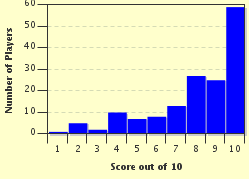Quiz Answer Key and Fun Facts
1. Jews trace the tradition of Aliyah back to the sixth century BCE, when Judah was captured by a powerful Middle Eastern empire, under the rule of Nebuchadnezzar II. Between 587 and 538 BCE, the Israelites were exiled, and only after Cyrus the Great intervened were they able to migrate back to Israel. What name is now given to that period of forced exile?
2. Aliyah was pretty boring between 500 BCE and 1300 CE, the year when immigration from Europe starting picking up. Anti-Semitic sentiment in countries like England, France, and Spain led monarchs to expel the Jews, who moved across the Atlantic or, often, to the Middle East. The Spanish Alhambra decree, for instance, occurred in 1492, the same year Ferdinand and Isabella sent Christopher Columbus off on his famous voyage. The Alhambra Decree was an important document during what repressive anti-Jewish and Muslim tribunal?
3. The first modern wave of aliyah began around 1880, with the emergence of the Bilu movement. Bilu was a movement designed to facilitate immigration from Europe, particularly from one country. That nation had already shown increasing anti-Semitism, with Alexander III's May Laws and the growing number of pogroms on Jewish shtetls. From which nation did the majority of First Aliyah Jews originate?
4. The Third Aliyah took place immediately after World War I. For the first time, Zionism, or the inheritance by the Jews of a Jewish homeland in Palestine, was beginning to take root. Central to this movement was the statement of the UK Foreign Secretary, whose namesake declaration addressed the Crown's desire for a homeland for the Jews in Palestine. Which politician made that assertion in 1917?
5. The number of immigrants to Israel only increased in the 1920s during the Fourth and Fifth Aliyot, culminating in the arrival of 250,000 immigrants during the 1930s. This time, though, the arriving population shifted to an area from further west in Europe, as Germans flooded into Israel in record numbers. What was the principal reason?
6. 1949 and 1950 saw the immigration of nearly 50,000 Jews from Yemen. American and British transports secretly ferried Jews to the country, in what was officially named Operation on Wings of Eagles but which was later informally changed to a more symbolic name. What common name is given to the operation that brought thousands of Yemenite Jews to Israel, in anticipation of similar programs that would occur throughout the Middle East?
7. One reason for post-independence immigration to Israel was a piece of 1950 legislation called the Law of Return. This law gives Jewish immigrants one major benefit upon arrival in Israel. What is it?
8. Another operation planned to aid in "aliyah" was dubbed Operation Moses and was instituted in 1984. With the assistance of CIA operatives, Israeli Defense Forces airlifted thousands of members of Beta Israel, a group of Jews claiming to be descendants of King Solomon and the Queen of Sheba. From which African country, also notable for its sizable Christian population, do the Beta Israel originate?
9. In the 1990s, immigration to Israel from the Soviet Union increased significantly, as 50,000 Russian Jews made aliyah. Economic hardship in the USSR was a prompt for many to leave, but, for the first time in Soviet history, the premier allowed unconditional immigration to Israel. That policy, along with his ideas of glasnost and perestroika, were widely unpopular. Who was this last Soviet leader, a liberal leader who presided over the USSR's dissolution?
10. Between 1990 and 2010, several other countries' Jews made aliyah in large numbers. Which of these nations, mostly due to its very low concentration of Jews, did NOT show any appreciable immigration to Israel during the first decade of the 21st century?
Source: Author
adams627
This quiz was reviewed by FunTrivia editor
bloomsby before going online.
Any errors found in FunTrivia content are routinely corrected through our feedback system.

